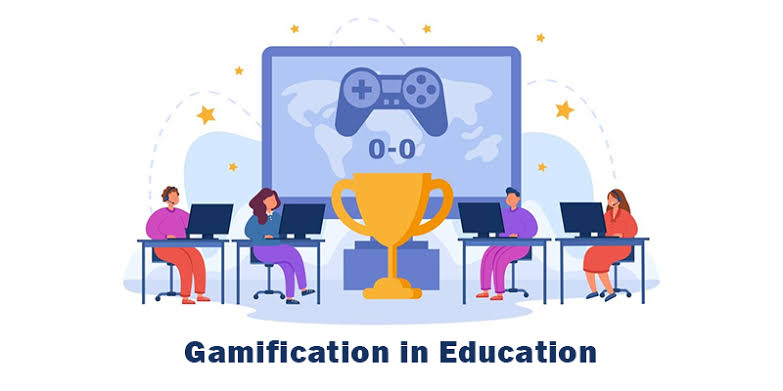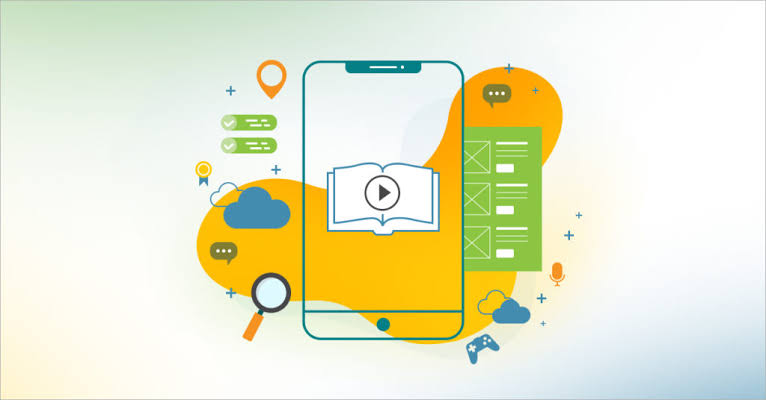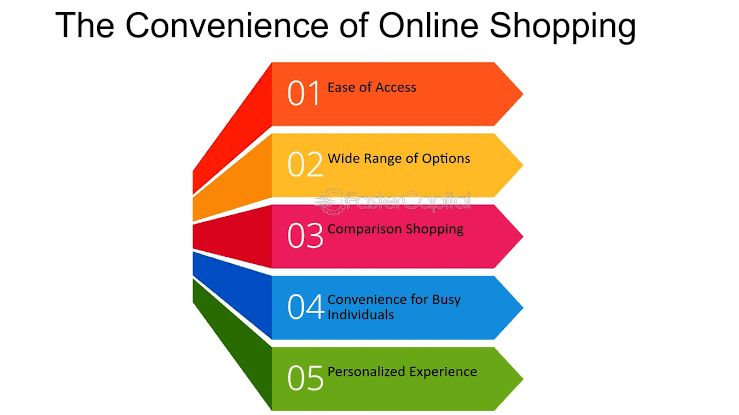
Gamification of Education: Making Learning Fun
Gamification of education transforms traditional learning into an engaging and motivating experience by integrating game elements into academic activities. This approach boosts student participation, encourages collaboration, and supports personalized learning paths. With the help of digital tools and creative teaching strategies, gamification not only makes learning fun but also builds essential life skills. However, careful implementation is crucial to ensure the right balance between enterta
✨ Raghav Jain

Introduction
Traditional education often struggles to keep students engaged. Lengthy lectures, repetitive assignments, and passive learning environments leave learners feeling bored and disconnected. But what if learning could feel as exciting as playing a game?
Gamification in education is transforming how we learn by applying game elements—points, levels, rewards, and challenges—to academic environments. It motivates students, encourages active participation, and makes even complex topics feel interactive and enjoyable.
This article explores how gamification is reshaping modern education, the science behind why it works, and practical ways teachers, parents, and learners can use it daily to improve focus, retention, and enthusiasm for learning. Gamification is a powerful approach that is transforming education by making learning more engaging and effective, and it’s much more than simply playing games in the classroom.It's about applying the core principles and design elements that make games so captivating—like points, badges, leaderboards, narratives, and challenges—to a non-game context, which in this case is learning.This strategy taps into the human psyche, leveraging our natural desire for competition, accomplishment, and social connection.When a lesson is reframed as a quest to be completed or a puzzle to be solved, students' motivation can shift from external pressure to an internal drive to succeed, driven by the satisfaction of "leveling up" or unlocking new content.This sense of visible progress, which is often lacking in traditional educational models, gives students a clear understanding of their journey and encourages them to keep pushing forward.Gamification also provides immediate feedback, a crucial element for learning, as students instantly know if they've answered a question correctly or mastered a concept, allowing them to correct mistakes in real-time rather than waiting for a test to see their results.This immediate reinforcement creates a dopamine rush, which in turn strengthens the neural pathways associated with the knowledge, making the information more likely to be retained long-term.Beyond individual achievement, gamification can foster a collaborative environment through team-based challenges and leaderboards, teaching students valuable skills like communication and problem-solving as they work together toward a common goal. This approach can be applied in various ways, from a simple classroom points system where students earn rewards for positive behavior and timely submissions, to sophisticated digital platforms like Kahoot! or Duolingo that turn language learning into a fun, interactive game.By breaking down daunting subjects into smaller, manageable tasks with clear milestones and rewards, gamification reduces the feeling of being overwhelmed and replaces it with a series of achievable goals.Ultimately, it’s not about turning education into a video game, but about using the powerful, engaging mechanics of games to create a learning environment where curiosity is sparked, participation is high, and the journey of acquiring knowledge is not a chore, but an enjoyable and purposeful adventure.Gamification is a transformative methodology that is rapidly reshaping the landscape of education, moving it beyond traditional paradigms of rote memorization and passive learning into a dynamic, interactive, and highly motivating experience. At its essence, it is the strategic application of game design elements and game principles in non-game contexts, specifically designed to harness the powerful psychological triggers that make games so compelling. It's not about turning classrooms into arcades, but about leveraging our innate human desires for achievement, mastery, competition, and social connection to make the process of learning inherently more engaging. This pedagogical shift addresses one of the most persistent challenges in education: student disengagement. By reframing a lesson or a course as a structured game, students' motivation can shift dramatically from an external, compliance-based pressure—like getting a good grade—to an internal, self-driven desire for accomplishment.
The core mechanisms of gamification are deceptively simple yet profoundly effective. These often include points, badges, and leaderboards. Points can be awarded for completing assignments, participating in discussions, or even for demonstrating positive classroom behavior. These points translate into a tangible measure of effort and progress, giving students a sense of continuous achievement. Badges, which are digital or physical tokens of recognition, serve as a way to celebrate mastering a specific skill or reaching a milestone. Unlike a final grade, which only appears at the end of a long and arduous process, badges provide frequent, positive reinforcement, helping to maintain motivation over time. Leaderboards tap into our natural competitive spirit, allowing students to see where they stand relative to their peers. When used constructively, this can motivate students to put in extra effort, though it requires careful management to prevent negative feelings or demotivation among those at the bottom of the list. By providing a clear framework of progress and reward, gamification gives students a sense of agency and control over their learning journey, replacing the feeling of being overwhelmed with a series of achievable goals.
Beyond these basic elements, gamification delves into more sophisticated design principles that are central to a truly captivating game experience. This includes creating compelling narratives and challenges. When a curriculum is woven into a storyline, such as a "quest" to save a kingdom from a math-based problem or a "mystery" to solve using scientific principles, it sparks curiosity and gives the learning a clear purpose. Students are no longer just solving equations; they are acting as heroes or detectives, making the academic content a tool to achieve a larger, more meaningful goal. Challenges, which are carefully designed tasks with clear rules and objectives, serve as the backbone of this approach. They are structured to be difficult enough to be engaging but not so difficult as to be frustrating, hitting the "flow state" that is characteristic of an enjoyable game. This continuous cycle of challenge, effort, and reward is what makes games so addictive, and its application in education can turn a tedious subject into an exciting pursuit.
One of the most critical aspects of gamification is its ability to provide immediate and actionable feedback. In a traditional classroom setting, a student might complete a homework assignment and wait days for a teacher to grade it, by which time the opportunity for real-time correction has passed. In a gamified system, like a platform that uses quizzes, the student receives instant feedback on their answers. They immediately know what they got right, what they got wrong, and can often see explanations for the correct answers. This rapid feedback loop is a fundamental principle of effective learning, allowing students to quickly correct their misunderstandings and reinforce correct concepts without delay. This process not only accelerates learning but also reduces the fear of failure, as a wrong answer is not a punitive mark but an opportunity to try again and earn more points. The focus shifts from avoiding mistakes to embracing them as a necessary part of the learning process.
The practical applications of gamification are extensive and can be seen across various educational domains. In language learning, apps like Duolingo use point systems, streaks, and leaderboards to motivate users to practice daily, making the acquisition of a new language feel like a fun, competitive game. In science, platforms can create virtual lab environments where students earn points for successful experiments and badges for mastering complex procedures, all within a safe, digital space. History can be taught through interactive timelines where students earn points for correctly identifying key events and figures, or by playing role-playing games where they embody historical characters and make decisions. Even in professional development and corporate training, gamification is being used to make learning new skills or company policies more engaging and effective, boosting employee retention and performance. The technology that supports this is becoming increasingly sophisticated, from simple web-based tools to immersive virtual and augmented reality experiences that truly place the learner in the heart of the action.
Ultimately, gamification of education is not about replacing the role of the teacher or the value of core academic content. Instead, it is a powerful set of tools that teachers can use to enhance their pedagogical approach, making the content more accessible and appealing to a new generation of learners who have grown up in a digital, interactive world. By tapping into the psychology of play, it transforms the learning process from a passive intake of information into an active, purposeful, and self-directed journey. It fosters an environment where curiosity is celebrated, effort is tangibly rewarded, and the joy of discovery is the primary motivator. In this way, gamification holds the potential to not only make learning fun but to create a new generation of lifelong learners who are intrinsically motivated to seek knowledge and overcome challenges.
What is Gamification in Education?
Gamification means integrating game mechanics into non-game contexts—in this case, education. It doesn’t mean turning classrooms into video games but using game-like strategies to boost student interest and performance.
Common Game Elements Used in Education:
- Points: For completing tasks or quizzes
- Badges: For reaching milestones
- Leaderboards: To encourage healthy competition
- Levels: To track progress or difficulty
- Quests/Challenges: To break content into exciting missions
- Rewards: Virtual or real prizes for achievements
Why Traditional Learning Falls Short
- Low Engagement: Repetitive lectures don’t capture interest.
- Lack of Motivation: Grades alone may not drive learners.
- Passive Learning: Little interaction = poor retention.
- Fear of Failure: Mistakes feel discouraging rather than motivating.
- One-size-fits-all: Doesn't cater to different learning styles.
Gamification solves many of these issues by turning learning into an interactive, goal-oriented, and rewarding experience.
The Science Behind Gamified Learning
Research in neuroscience and behavioral psychology shows gamification activates the brain’s reward system, increasing dopamine—the “feel-good” hormone.
Benefits include:
- Improved memory retention
- Higher concentration levels
- Increased participation and attendance
- More willingness to tackle difficult tasks
A study by the University of Colorado found that gamified training improved performance by 14% in skill-based knowledge and 9% in retention.
Benefits of Gamification in Education
1. Boosts Motivation
Game elements like points and badges offer instant feedback, keeping students engaged and excited to learn more.
2. Encourages Active Participation
Instead of passive listening, learners complete missions, answer quizzes, and unlock achievements—actively participating in the learning process.
3. Promotes Goal-Oriented Learning
Clear objectives and level progression create a sense of purpose and direction.
4. Provides Safe Space for Failure
Games allow trial and error. Mistakes become part of learning, reducing fear and improving resilience.
5. Caters to All Learning Styles
Gamified content appeals to visual, auditory, and kinesthetic learners—making it inclusive and diverse.
6. Improves Collaboration and Social Learning
Multiplayer games, class leaderboards, and team-based challenges improve communication and teamwork.
Gamification Tools and Examples
For Classrooms or Online Learning:
- Kahoot: Live quiz games
- Classcraft: Turns classroom behavior into a fantasy role-playing game
- Quizizz: Fun multiplayer quiz app
- Duolingo: Language learning app with points and streaks
- Minecraft Education Edition: Teaches subjects through digital world-building
For Self-Learners:
- Habitica: Turn your goals into an RPG-style game
- Anki: Flashcards with progress tracking
- Brainscape: Gamified flashcards with spaced repetition
- Coursera/EdX: Use badges and progress indicators in courses
Daily Gamified Learning Routine
Morning
- Start with a quiz game (Kahoot or Quizizz) on the day’s topic
- Award points or stickers for participation
Afternoon Study
- Break learning into “missions” with time limits
- Level up after every chapter or lesson completed
- Use digital flashcard apps like Anki to gamify revision
Evening Revision
- Reflect: “Which challenges did I complete today?”
- Log progress into a habit tracker or learning app
- Unlock a small reward (fun time, sticker, or treat)
Weekly Gamified Learning Practices
✅ Create a weekly “Boss Battle” quiz on Friday
✅ Design a leaderboard for goals: reading, projects, assignments
✅ Reward badges or stars for consistent efforts
✅ Host a mini contest or game with friends or classmates
✅ Introduce a “mystery question” every week for bonus points
✅ Reflect on wins and where you can level up next week
DIY Gamification at Home or in Class
You don’t need high-tech tools to gamify learning! Try these simple ideas:
- Progress Charts:
- Create colorful tracking boards where students/study groups earn stickers or stars for completed topics.
- Treasure Hunt Quizzes:
- Hide questions around the room or house. Each correct answer leads to a “treasure” (reward or next clue).
- Flashcard Battles:
- Turn flashcards into a competitive quiz battle with friends.
- Mini Challenges:
- Create time-bound tasks: “Can you solve 5 math problems in 3 minutes?” or “Spell 10 words before the timer ends.”
- Learning Wheel:
- Make a DIY spinning wheel with tasks like “Draw a concept,” “Teach a friend,” or “Quiz yourself.”
Gamified Learning for Different Age Groups
Primary Kids (Age 5–10):
- Star charts, coloring progress sheets, treasure hunts
- Apps like ABCmouse, Prodigy
Teens (Age 11–18):
- Leaderboards, challenge cards, competitive quizzes
- Kahoot, Quizizz, Minecraft Education
College Students:
- Task-based progression, flashcard duels, peer competitions
- Duolingo, Notion habit gamification, Habitica
Adult Learners:
- Gamify self-study goals with streak tracking
- Badge system for completed modules
- Online courses with visual dashboards
Gamification Myths: Busted!
“Gamification is just for kids.”
→ False. Adults benefit just as much—especially in corporate training or self-learning apps.
“It distracts from real learning.”
→ Not true. If done right, it enhances focus, memory, and retention.
“You need expensive tech to gamify learning.”
→ Nope! You can gamify using paper, colors, flashcards, and creativity.
“Games make students lazy.”
→ Quite the opposite. It activates participation, encourages effort, and increases resilience.
“Only teachers can use gamification.”
→ Anyone can! Parents, tutors, self-learners, and even friends can build learning games together.
Sample Gamified Study Plan for One Day
Morning Focus (30–45 mins)
- Start with a “quest card” of 3 tasks (e.g., Watch a video, Answer 5 questions, Write 3 key points)
- Earn 10 points for each task
Afternoon Boost (20–30 mins)
- Use flashcards for a quiz duel
- Bonus 5 points for answering in 30 seconds or less
Evening Wrap-Up (20 mins)
- Complete a reflection journal: “What did I learn?”
- If all tasks done: unlock reward (fun time, treat, or new badge)
Conclusion
Gamification isn’t about turning learning into a game—it’s about turning education into an engaging, rewarding journey. When learners feel empowered to track their progress, set goals, and celebrate wins, they naturally become more motivated, focused, and resilient.
Whether you’re a student, teacher, parent, or lifelong learner, gamifying your learning process brings joy, purpose, and fun into education. With tools as simple as sticker charts or as advanced as gamified apps, you can make every learning session feel like an exciting adventure.
So, why wait? Start adding points, badges, and missions to your study life today.
Because learning should never feel like a chore—it should feel like a quest worth completing.
Q&A Section
Q1:- What is the gamification of education?
Ans :- Gamification of education is the use of game-like elements—such as points, levels, badges, and rewards—in learning environments to increase student engagement, motivation, and participation.
Q2:- How does gamification enhance student motivation?
Ans :- By offering instant feedback, clear goals, and progress tracking, gamification taps into intrinsic motivation, making learning feel more like a rewarding challenge than a chore.
Q3:- What are common gamification techniques used in classrooms?
Ans :- Techniques include leaderboards, quizzes with rewards, educational games, missions or quests, and digital badges that recognize accomplishments and encourage ongoing learning.
Q4:- How does gamification support personalized learning?
Ans :- Gamified systems often adapt to individual progress, allowing students to learn at their own pace and receive rewards based on personal improvement and effort.
Q5:- Can gamification improve collaboration among students?
Ans :- Yes, through team-based challenges, multiplayer educational games, and cooperative missions, students learn to work together, share knowledge, and develop social skills.
Q6:- Is there evidence that gamification improves academic performance?
Ans :- Research suggests that well-implemented gamification increases retention, participation, and conceptual understanding—especially in subjects like math, science, and language learning.
Q7:- What are the challenges of gamifying education?
Ans :- Challenges include maintaining balance between fun and learning, avoiding over-competition, ensuring inclusivity, and preventing students from focusing only on rewards.
Q8:- How can teachers implement gamification effectively?
Ans :- Teachers should align game elements with learning outcomes, keep it simple, use storytelling, offer meaningful rewards, and regularly assess what engages their students most.
Q9:- What are some popular tools or platforms for gamified learning?
Ans :- Tools like Kahoot!, Duolingo, ClassDojo, Quizizz, and Minecraft Education Edition are widely used to blend play and education effectively.
Q10:- How does gamification prepare students for future careers?
Ans :- It builds critical thinking, problem-solving, adaptability, and tech skills—traits essential in the modern workforce—while fostering a growth mindset through continuous learning.
Similar Articles
Find more relatable content in similar Articles

Tech vs Nature: Can They Coexi..
The debate of "Tech vs Nature".. Read More

From Classroom to Career: App..
Skill-building apps help stud.. Read More

The Rise of Green Tech: Innova..
Green technology is revolutio.. Read More

E-Commerce and the Convenience..
E-commerce has revolutionized .. Read More
Explore Other Categories
Explore many different categories of articles ranging from Gadgets to Security
Smart Devices, Gear & Innovations
Discover in-depth reviews, hands-on experiences, and expert insights on the newest gadgets—from smartphones to smartwatches, headphones, wearables, and everything in between. Stay ahead with the latest in tech gear
Apps That Power Your World
Explore essential mobile and desktop applications across all platforms. From productivity boosters to creative tools, we cover updates, recommendations, and how-tos to make your digital life easier and more efficient.
Tomorrow's Technology, Today's Insights
Dive into the world of emerging technologies, AI breakthroughs, space tech, robotics, and innovations shaping the future. Stay informed on what's next in the evolution of science and technology.
Protecting You in a Digital Age
Learn how to secure your data, protect your privacy, and understand the latest in online threats. We break down complex cybersecurity topics into practical advice for everyday users and professionals alike.
© 2025 Copyrights by rTechnology. All Rights Reserved.